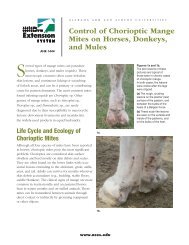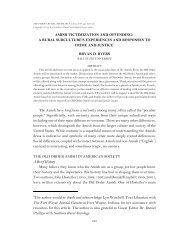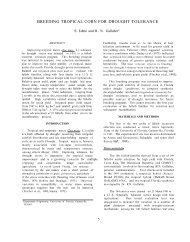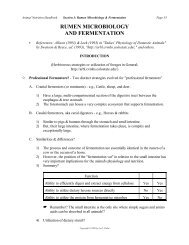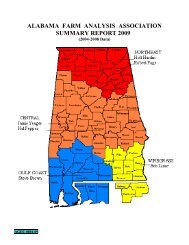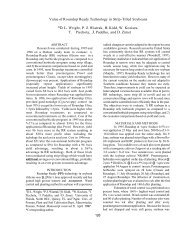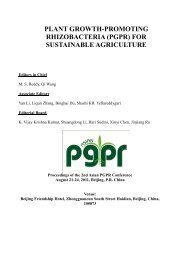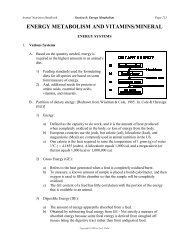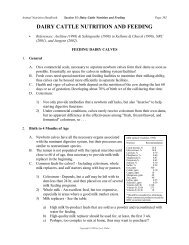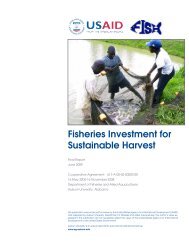LEWIS SMITH LAKE - Auburn University
LEWIS SMITH LAKE - Auburn University
LEWIS SMITH LAKE - Auburn University
Create successful ePaper yourself
Turn your PDF publications into a flip-book with our unique Google optimized e-Paper software.
Annual point source total suspended solids (TSS) loading was 12,606 Ib/year (5,717 kg/year).<br />
Hendrix Health Care Center contributed 45.4%, Meek High School 11.8%, West Point School 9.7% and<br />
Good Hope WWTP 9.4% ofthe TSS load. Seven discharges produced the remaining 23.7%.<br />
Annual point source ammonia nitrogen (NH3-N) loading was estimated at 754 Ib/year (342<br />
kg/year). Cold Springs School contributed 31.5%, Winston County High School 22.2%, West Point<br />
School 16.9% and Double Springs Elementary School 15.7%. Four discharges produced the remaining<br />
13.7%. Two discharges did not have NH3-N discharge limits and did not monitor for it.<br />
Analysis oftotal phosphorus (TP) and total nitrogen (TN) was not required by any ofthe<br />
permits. For this reason annual point source loading ofthese two nutrients could not be determined.<br />
Ofthe two major contributors ofBOD and TSS to Lewis Smith Lake, the Hendrix Health Care<br />
Center discharged 211 % of its permitted annual BOD load, and 75% ofits permitted discharge. No TSS<br />
permit limit was found, but TSS's were monitored and the annual load was estimated at 5,723 Ib/year<br />
(2,595 kg/year). The Good Hope WWTP only discharged 22.4% of its permitted annual BOD load, 7.4%<br />
of its permitted annual TSS load and 57.6% of its permitted discharge. Two facilities were found to<br />
discharge greater quantities ofTSS and NH,-N than were permitted. Meek High School, the only<br />
permitted discharge into Dismal Creek, discharged 181 % of its permitted annual TSS load, 82% of its<br />
permitted discharge, 20% of its permitted annual BOD load, and 21 % of its permitted annual NH,-N<br />
load. Double Springs Elementary School, the only permitted discharge into Clear Creek, discharged<br />
16.4% of its permitted annual NH,-N load, 29% of the permitted discharge, 17% of its permitted annual<br />
BOD load, and 18% of its permitted annual TSS load.<br />
Ofthe five subwatersheds monitored, the Ryan Creek and Sipsey Fork were the most impacted.<br />
Each had three point sources. The Ryan Creek subwatershed received 29.8% of the total annual BOD<br />
load, 18.4% of the total annual TSS load, 33.8% of the total annual NH3-N load, and 58.4% of the total<br />
annual discharge. Sipsey Fork subwatershed received 57.1% of the total annual BOD load, 55.6% of the<br />
28



